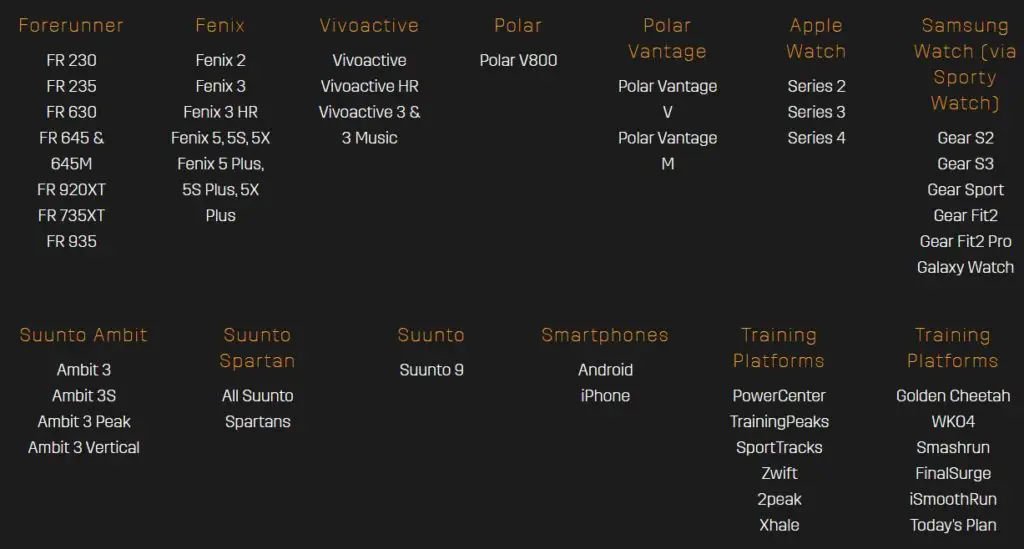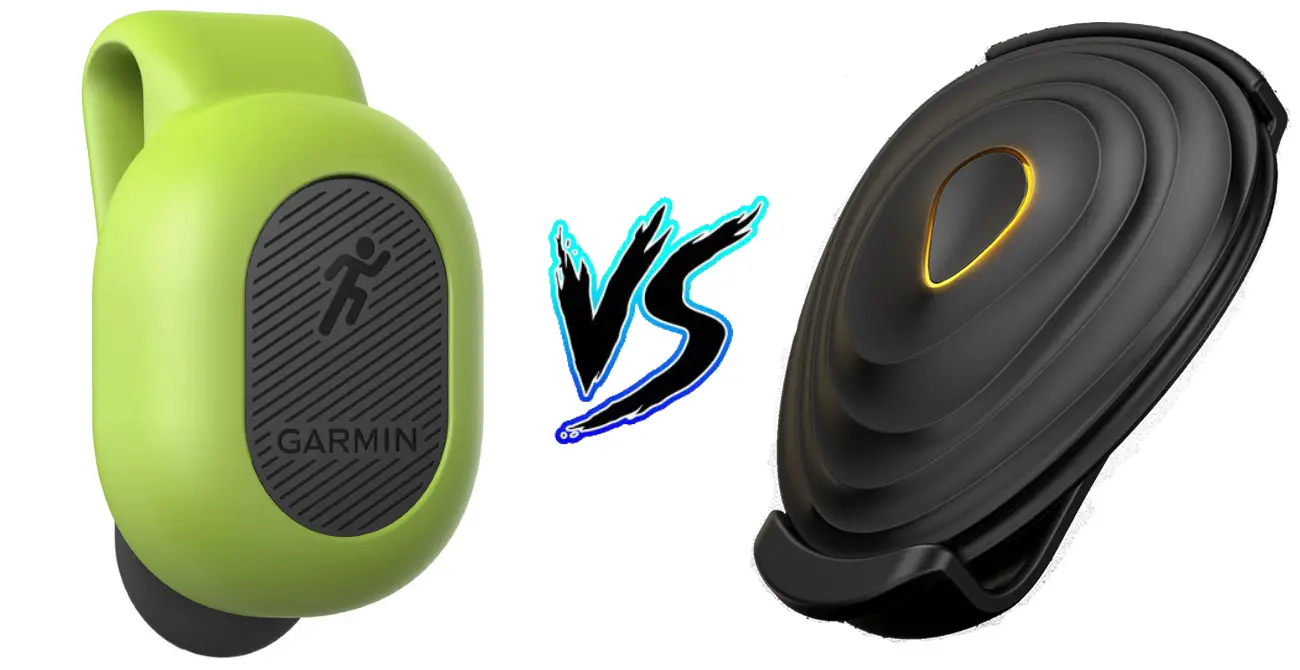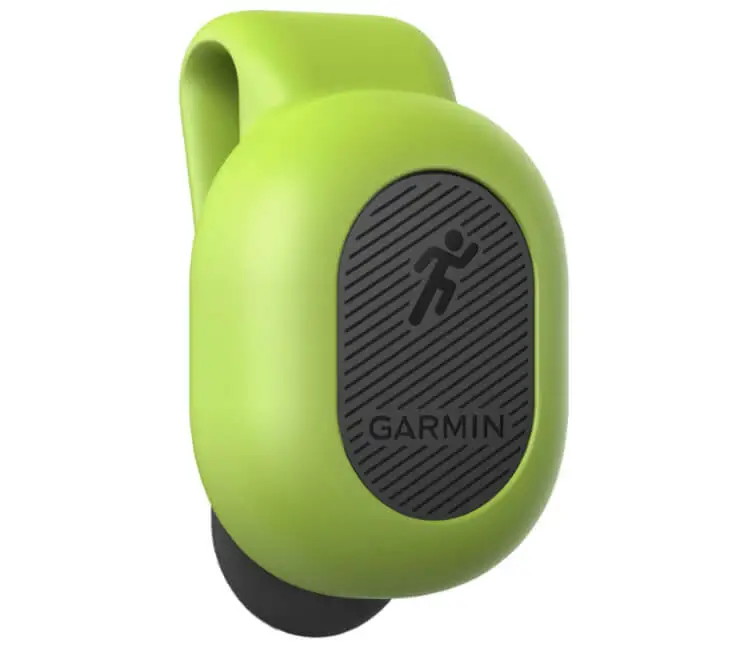First off, I need to make something crystal clear. There are actually two different Garmin Pods.
1 – Garmin Running Dynamics Pod – This is the one that measures running power. It can actually go head to head with the Stryd in terms of features. Take Note – It clips onto your waist, rather than your foot.
2 – Garmin Foot Pod – This is the one that doesn’t measure running power. Even though you wear it on your foot, it’s not actually comparable to the Stryd in terms of features. The tech in this product is much older. For modern Garmin users (2015 watches and onwards), it’s only useful for getting better stats when running on a treadmill.
For this article, I will be comparing the Garmin Running Dynamics Pod to the Stryd Foot Pod.
I’m going to assume that your primary concern is ‘running power’, and you just want to better understand how the Garmin Pod stacks up against it’s more expensive rival, the Stryd Sensor.
With that out of the way, let’s have a look at the key features.
Stryd vs Garmin Running Dynamics Pod
As you can see from the stats above, the Garmin Running Dynamics Pod holds its own against the Stryd Sensor. But there are some other key things that you need to be aware of…
Device Compatibility
The lack of compatible devices is the biggest weakness of the Garmin Running Dynamics Pod. On the other end of the spectrum, the Stryd sensor is compatible with most GPS running watches from Garmin, Polar, Suunto and other leading brands.
The tables below should clear up any confusion here.
Garmin Running Dynamics Pod - Compatible Devices
- D2 Charlie
- Descent Mk1
- fenix 5
- fenix 5S
- fenix 5X
- fenix Chronos
- Forerunner 645
- Forerunner 645 Music
- Forerunner 735XT
- Forerunner 935
- quatix 5
- quatix 5 Sapphire
Stryd Foot Pod - Comptatible Devices

Are There Other Garmin Devices That Measure Running Power
Yes. In total, there are 3 Garmin products which measure running power:
If you already own the HRM Run or the HRM-Tri, you don’t actually need the Running Dynamics Pod. Both the HRM Run and the HRM-Tri will give you the same key running stats, namely:
- Cadence
- Ground Contact Time
- Left vs Right Foot Balance (Ground Contact Time Balance)
- Stride Length
- Vertical Oscillation
- Vertical Ratio
So if the running dynamics pod isn’t compatible with your particular Garmin device, you can still get the same stats from the HRM-Run or the HRM-Tri.
The last thing on this front is that you need to download the Garmin Running Power App to bring all this information together, and integrate the stats with your watch.
So which is better, the Stryd or the Garmin Running Dynamics Pod?
The reviews of the Garmin Running Dynamics Pod and the Stryd Sensor are both very positive. If it were up to me, I would opt for the Running Dynamics Pod, mainly for monetary reasons (it’s less than half the price).
However, my daily watch (Garmin Forerunner 35) isn’t compatible with the Running Dynamics Pod, and the Stryd is probably the better product overall.
Ultimately, the Stryd is better for displaying your running power data in real time, and it’s compatible with a lot more devices. The biggest drawback is price.
The Garmin Running Dynamics Pod is better if you want to unlock running power and other advanced running stats, without breaking the bank. But you must check that your watch is compatible.
What's the biggest benefit of owning the Stryd?
It’s very easy to push too hard during the initial phases of a race, only to find yourself completely gassed in the final stretch.
When used properly, the Stryd can gives you access to a metric (real time running power), that makes it very clear when you are pushing yourself too hard during a race.
In other words, you can set your ‘target running power zone’ and then use the Stryd to ensure that you stay within that zone. This is especially useful for tackling uphill and downhill sections of a course. It’s also very handy if you have a tendency to push way too hard in the beginning of a race.
The video below also gives a nice summary of the main benefits of the Stryd Foot Pod.
What's the biggest benefit of owning the Garmin Running Dynamics Pod?
Basically, it unlocks running power data and other advanced running stats that you can’t get without the pod. It can turn an advanced Garmin running watch into a super advanced Garmin running watch. This 50 second video also summarizes the benefits quite nicely, in a way which makes the stats very easy to understand.
Is there anything else worth mentioning?
I think we’ve covered all the main elements.
The only other thing that might be worth mentioning is that the Polar Vantage V actually measures running power directly from the watch (ie no Stryd sensor, running pods or chest belts required).
If you don’t already have a GPS running watch, and you want running power measurements without any accessories, the Vantage V is literally the only option in the world right now.
Lastly, if you want to read more about Garmin Running Power and the other ways you can access it, this post has a lot more details.



